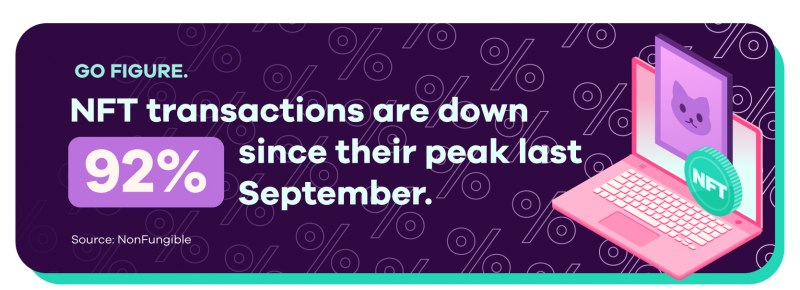Keep
calm and carry on (and stop obsessively checking the balance of your
retirement accounts)
LINDSEY BELL • May 11, 2022 • 3 min read
Welcome to Money Moves. I’m digging into all things money — moves that can impact you, links and insights, and the one thing I can’t get off my mind.
What happened:
If you’ve checked the balance of your 401(k) or IRA recently, it’s more than likely your retirement funds are looking a little light. It can be an unsettling sight, but we’ve been here before and we need to remember it’s all part of the ride. The stock market has definitely been a roller coaster of late — with lots of sharp rising and falling throughout the year.
You’ve probably seen more than a few headlines about major market drops in recent weeks, so it’s normal to feel anxious about your accounts. Some analysts are saying a recession could be on the way, but the reality is it’s hard to tell exactly where the stock market will go from here, especially in the short term. My best advice through periods like this is to remember why you invested your money in the first place (hopefully, for your long-term plans).
Why it matters:
I know, sometimes throwing in the towel and stuffing your money under your mattress may feel like the only way to sleep well at night. But, as you might imagine, that’s not the best move you could make (for your mattress or your financial future).
First of all, cashing in your 401(k) or IRA isn’t as simple as removing your money from your accounts. It comes with some very real costs. There will likely be a tax bill with your name on it, and you might incur additional unplanned fees or penalties.
Not to mention you could miss some of the biggest up days in the market, as they typically follow the biggest down days. The stock market has a record of returning to old highs and surpassing them over time — since 1950 the stock market has returned around 8% annually. “Missing out” may seem inconsequential, but compounded over time, missing out on long-term gains could make it harder to reach the goals you set when you first started investing.
What it means for you:
The benefits of investing are undeniable. But just like with any reward, there is a level of inherent risk. The past few weeks have served as a strong reminder of that. Getting nervous about the future of your money is totally normal. But don’t let your emotions get the better of you. To keep yourself centered and focused on the big picture, take a deep breath and remember the 5 basic principles of investing.
Think about that beach house or cabin in the woods you plan to spend your later years in or all the family you plan to spend time with. Then think about all the time you still have to work toward that goal. Then exhale a sigh of relief knowing that you have time on your side. (And set up the automatic contribution to your retirement account, if you haven’t yet.)
For those who haven’t started investing or saving for retirement (which is almost half of you according to a recent Ally survey) think of this as an opportunity to finally get started. In a recent survey, 75% wished they had started investing sooner. Make your “sooner” right now. While I can’t say where the market will be in a month – let alone a year— I do know prices are cheaper now than they have been in a long time. It’s not without risk, but the potential rewards for your financial future may be worth taking the plunge.

Check out what else we’re reading this week.
-
Crypto continues to be volatile (one of the many impacts of inflation) and has dropped more than 50% since November.
-
Interest rates are up. Here’s what you need to know.

Lindsey Bell is an award-winning investment professional with a passion for personal finance and more than 17 years of Wall Street experience. Bell’s unique ability to connect the dots between data and real life and craft bite-sized money ideas that people can use and apply stems from her deep background as an analyst, researcher and portfolio manager at organizations including J.P. Morgan and Deutsche Bank. She is known for demonstrating why and how an understanding of all things money improves a person’s finances and overall well-being. An ongoing CNBC contributor, Bell empowers consumers and investors across all walks of life and frequently shares her insights with the Wall Street Journal, Barron’s, Kiplinger’s, Forbes and Business Insider. She also serves on the board of Better Investing, a non-profit focused on investment education.


